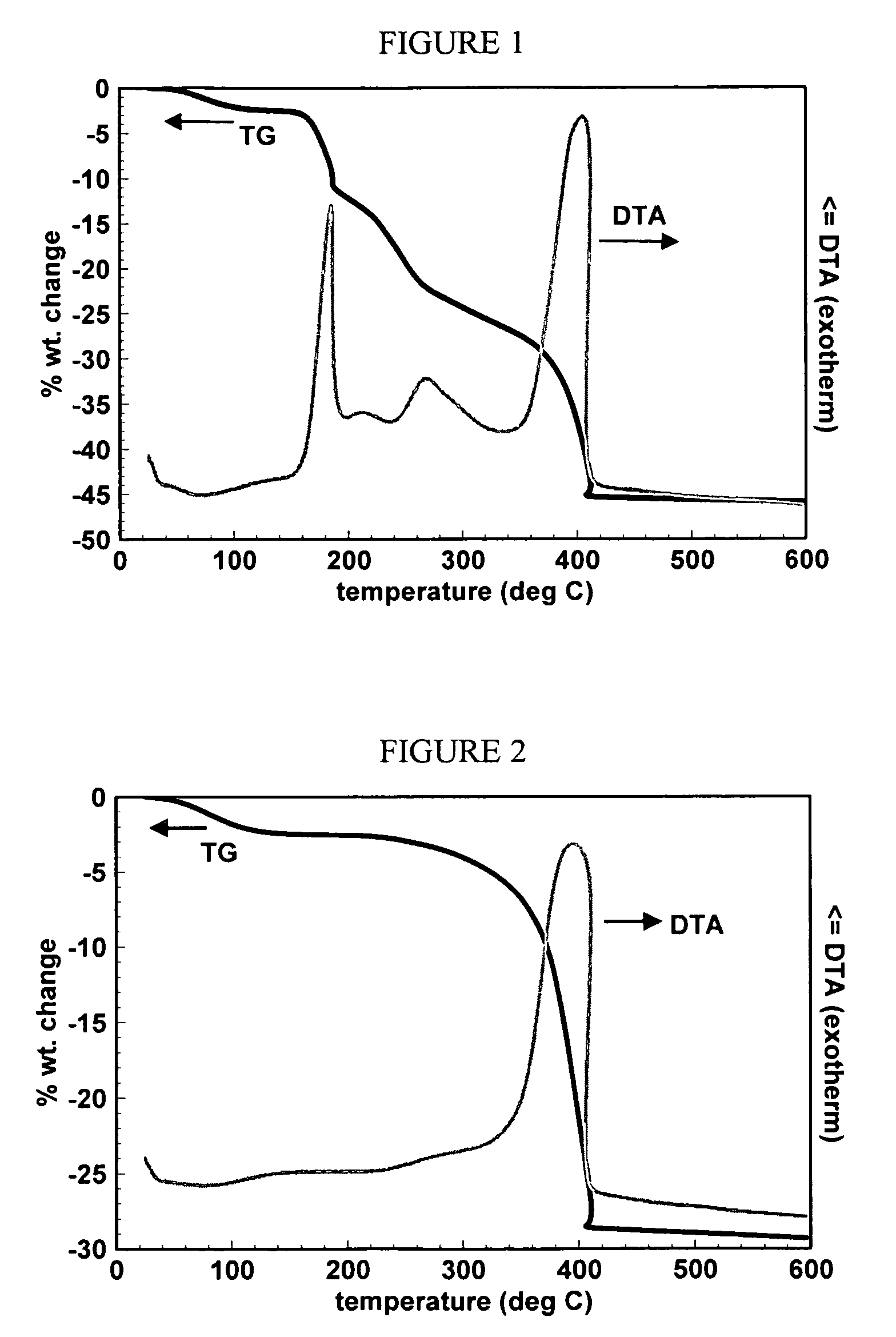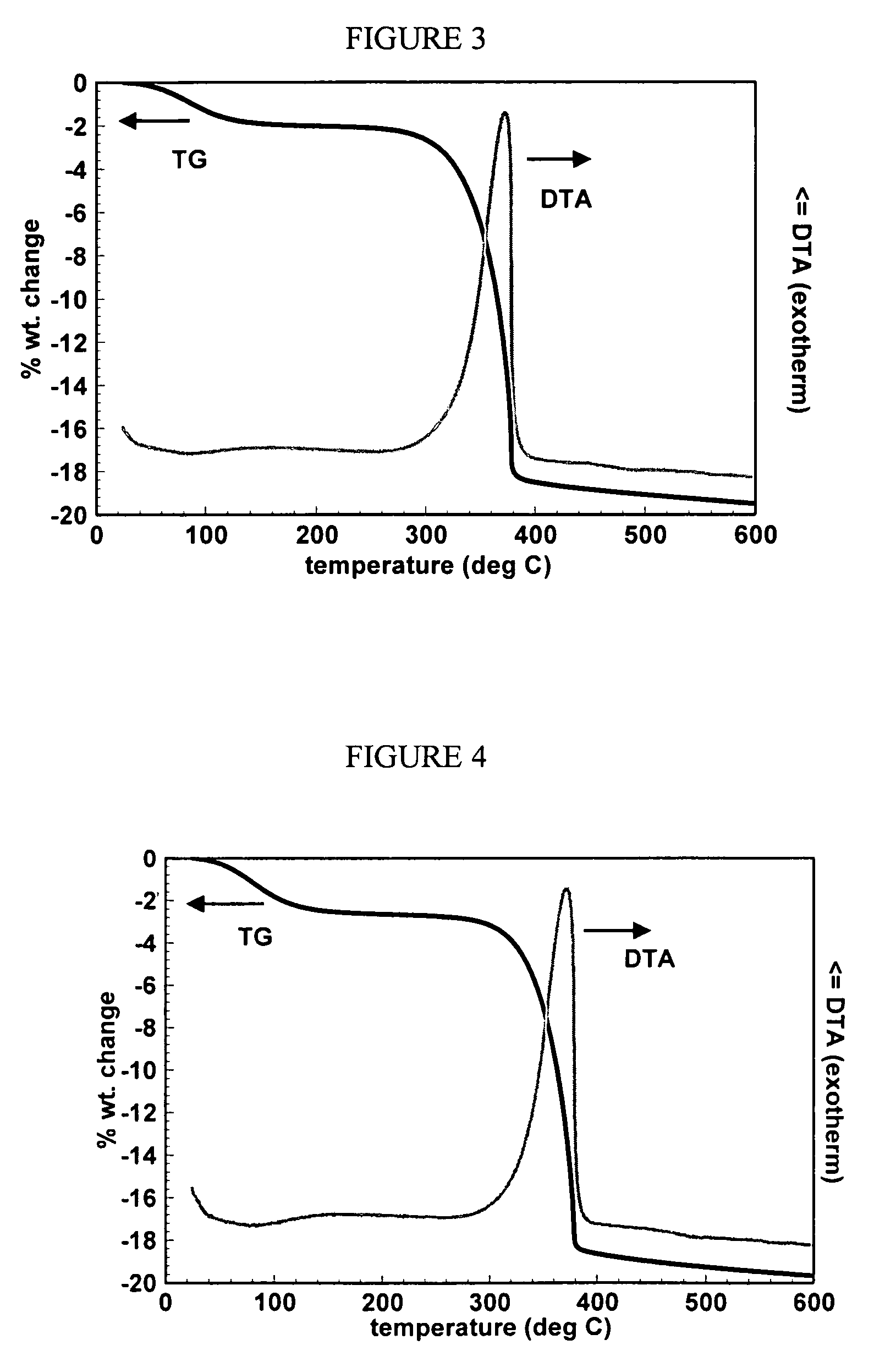Partially decomposed catalyst and hydrocarbon oxidation processes using the same
a technology of hydrocarbon oxidation and catalyst, which is applied in the direction of catalyst activation/preparation, metal/metal-oxide/metal-hydroxide catalyst, etc., can solve the problems of corrosive nature of copper and bromine catalysts used, subsequent difficulties in downstream processing, and dmc azeotropes
- Summary
- Abstract
- Description
- Claims
- Application Information
AI Technical Summary
Benefits of technology
Problems solved by technology
Method used
Image
Examples
example 1
Preparation of 5% Cu / SiO2 Catalyst
[0046]Example 1a: 10.0 grams of a silica powdered support (surface area=270 m2 / g) was impregnated by incipient wetness with solution prepared by mixing 2.0 grams of Cu(NO3)2.3H2O, 11.6 grams of L-arginine, and enough water to form a total 10 cc solution volume. The sample was dried overnight at 100° C.
[0047]The Cu-arginine complex was then calcined in air to 250° C. at a rate of 4° C. / min to form an organo-oxide Cu remnant. The decomposition pattern of the Cu-arginine complex, as measured by a TG / DTA trace, is shown in FIG. 1.
[0048]Example 1b: The organo-oxide Cu remnant was further decomposed by calcining the remnant in air to 600° C. The decomposition pattern of the organo-oxide Cu remnant, as measured by a TG / DTA trace, is shown in FIG. 2.
example 2
Preparation of 5% CuO, 2% NiO / SiO2 Catalyst (Partial Decomposition)
[0049]23.2 grams of a silica powdered support (surface area=270 m2 / g) was impregnated by incipient wetness with a solution prepared by mixing 3.8 grams of Cu(NO3)2.3H2O, 1.95 grams of Ni(NO3)2.6H2O, 15.87 grams of L-arginine, and enough water to form a total 19 cc solution volume. The sample was dried overnight at 100° C.
[0050]The resulting complex was then calcined in air to 275° C. at a rate of 4° C. / min to form a remnant. The decomposition pattern of the complex, as measured by a TG / DTA trace, is shown in FIG. 4.
example 3
Preparation of 5% CuO, 2% NiO / SiO2 Catalyst (Full Decomposition)
[0051]A portion of the catalyst from Example 7 was calcined to 400° C. at a rate of 0.5° C. / min, and then held at that temperature for 4 hours to remove all remnant organic phases.
PUM
| Property | Measurement | Unit |
|---|---|---|
| pressure | aaaaa | aaaaa |
| temperature | aaaaa | aaaaa |
| diameter | aaaaa | aaaaa |
Abstract
Description
Claims
Application Information
 Login to View More
Login to View More - R&D
- Intellectual Property
- Life Sciences
- Materials
- Tech Scout
- Unparalleled Data Quality
- Higher Quality Content
- 60% Fewer Hallucinations
Browse by: Latest US Patents, China's latest patents, Technical Efficacy Thesaurus, Application Domain, Technology Topic, Popular Technical Reports.
© 2025 PatSnap. All rights reserved.Legal|Privacy policy|Modern Slavery Act Transparency Statement|Sitemap|About US| Contact US: help@patsnap.com


